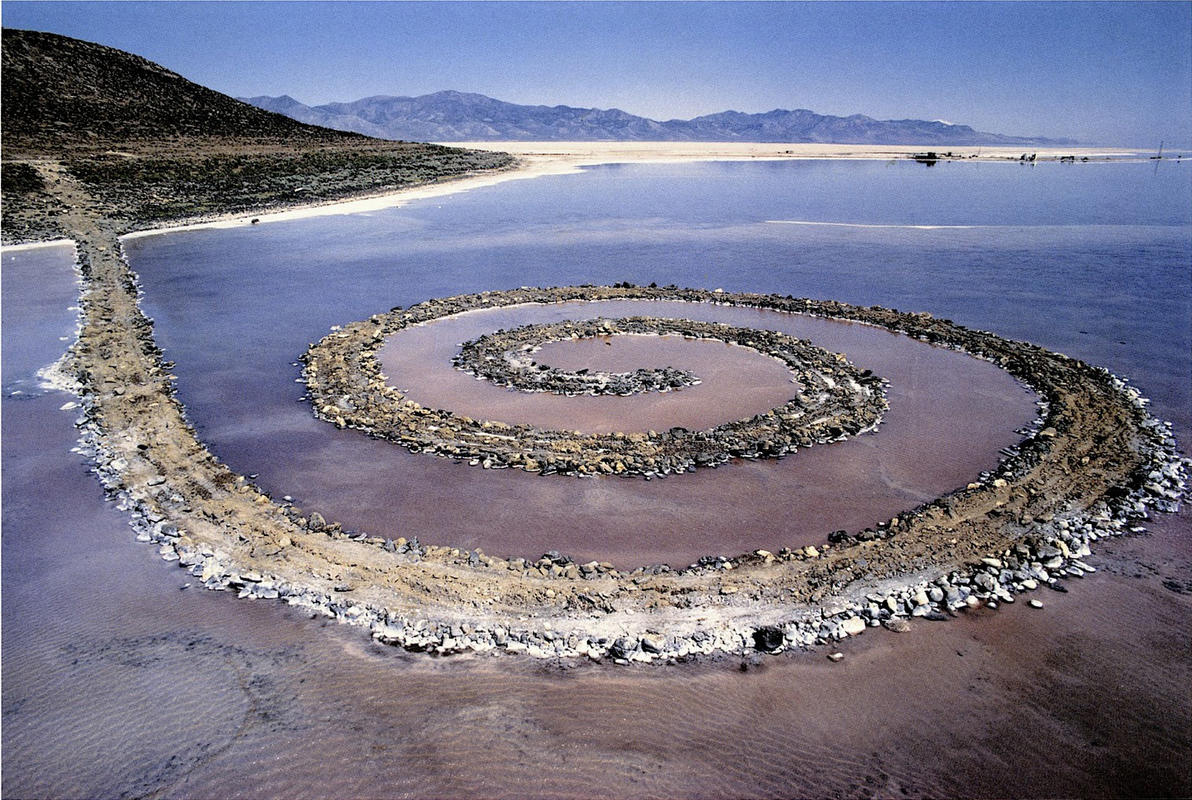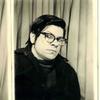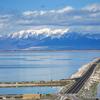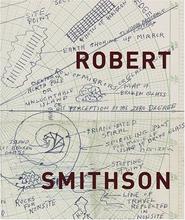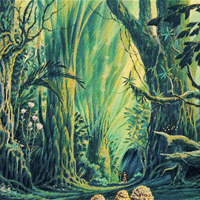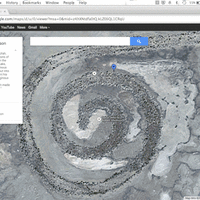More about Spiral Jetty
- All
- Info
- Shop

Contributor
Besides awesome skiing and a plethora of Mormons, Salt Lake City has something hidden in its landscape that's almost as mesmerizing as the story of Joseph Smith himself.
Concealed on the arid banks of Rozel Point peninsula on the northeastern shore of the Great Salt Lake lies…(wait for it)…a pile of rocks! Yes, one of this areas largest bragging points is a formation of over 10,000 tons of black basalt stones and earth.
Spiral Jetty is one of the most iconic earthwork pieces and is Smithson’s most infamous work. With the help of a crew of burly men and some high-powered construction equipment, Smithson “enhanced” this desolate area of the lake by forming the corkscrew structure that can still be seen today almost fifty years after its creation. While it is possible to visit this work now (assuming you have an off-road vehicle to get you there), this was not always the case. This piece lasted only two years before the rising lake level submerged this work, hiding it from sight for nearly thirty years.
A much-welcomed salty surprise from Mama Nature, Smithson embraced the natural takeover of his work, seeing the ruthless entropy of the earth as part of his art. Most land artists idealize the process of degradation, yet many onlookers detest nature taking back what is rightfully hers. In fact, there have been multiple controversies regarding the preservation of the jetty.
While this piece of art may seem completely random, it's an homage to the Pre-Columbian structure the Serpent Mound. Built by indigenous tribes around 1070 AD, this beloved effigy is one of Ohio’s only and greatest claims to fame! Smithson is not the only artist who was inspired by this serpentine bulge in the earth though; Maya Lin created an earthwork piece to commemorate this site as well which she called Eleven Minute Line.
The early band of earthwork artists was a macho bunch indeed. With an affinity towards dirt and rocks, these artists felt it their duty to muddy up the waters of the pristine art world. Because nature didn’t get it right the first time, these artists used materials of the earth to enhance the environment. While it may seem like an egotistical bender these artists were on, this movement was much more about sticking it to the art world than taking an environmental stance. Basically, these artists loathed the commodification of art and the power that the market has over our perception of what good art is. So these artists made it their goal to produce art that no one could buy. Take that, art world! Honestly, these artists were probably too grimy for the spotless white walls of the gallery anyways.
So if you find yourself in Utah yearning to feast your eyes on something iconic (and since Joseph Smith’s golden plates have yet to be “rediscovered”) perhaps you can settle for a trip of Smithson’s Spiral Jetty instead.
Featured Content
Here is what Wikipedia says about Spiral Jetty
Spiral Jetty is an earthwork sculpture constructed in April 1970 that is considered to be the most important work of American sculptor Robert Smithson. Smithson documented the construction of the sculpture in a 32-minute color film also titled Spiral Jetty. Built on the northeastern shore of the Great Salt Lake near Rozel Point in Utah entirely of mud, salt crystals, and basalt rocks, Spiral Jetty forms a 1,500-foot-long (460 m), 15-foot-wide (4.6 m) counterclockwise coil jutting from the shore of the lake.
In 1999, the artwork was donated to the Dia Art Foundation; it is one of 12 locations and sites owned by the foundation. Since its initial construction, those interested in its fate have dealt with questions of proposed changes in land use in the area surrounding the sculpture. In order to preserve the work, Dia asks that visitors not take existing rocks from the artwork, make fire pits, or trample vegetation. There are no facilities at the site, so visitors must carry any waste away with them.
Check out the full Wikipedia article about Spiral Jetty

